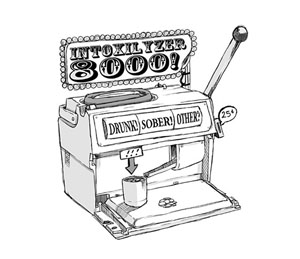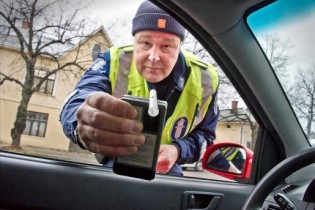 A third bus driver has been charged with DWI this month in New York, after crashing into a tree while children were on board. In response to the string of dangerous drunk driving antics, New York lawmakers State Senator Charles Fuschillo and Nassau District Attorney Kathleen Rice immediately called for new legislation requiring an ignition interlock device in all buses, which would prevent a person with alcohol in their system to start the bus.
A third bus driver has been charged with DWI this month in New York, after crashing into a tree while children were on board. In response to the string of dangerous drunk driving antics, New York lawmakers State Senator Charles Fuschillo and Nassau District Attorney Kathleen Rice immediately called for new legislation requiring an ignition interlock device in all buses, which would prevent a person with alcohol in their system to start the bus.
The legislation, which is co-sponsored by Fuschillo and supported by Rice and Assemblyman David McDonough, would require all New York buses manufactured after July 1, 2013 to be equipped with an ignition interlock device. The estimated costs for these devices, as estimated by the lawmakers, would cost between $750-$1,500 per bus.
In just one month, there have been three incidents involving school bus drivers allegedly driving drunk. The October 3 incident involved a Long Island bus driver who was transporting five children home when he crashed his bus into a residential home.
In the latest incident, school bus driver Robert Stundis was pulled over when his mini-bus swerved due to a blown front tire. He was pulled over by police, and a half empty bottle of vodka was found in the bus, and his BAC registered at .23, almost three times the legal limit. He had made his last stop less than an hour before he was stopped by police. If the law passes, New York would be the first state in the nation to require the use of ignition interlock devices on school buses.
 Since 2010, all drivers convicted of DWI in New York must use an ignition interlock device on their vehicle for a minimum of six months. The device will not allow the car to start if alcohol, which can be as low as .025%, is detected in the driver’s breath. This zero tolerance policy started as a provision under New York’s “Leandra’s Law”, also known as the Child Passenger Protection Act.
Since 2010, all drivers convicted of DWI in New York must use an ignition interlock device on their vehicle for a minimum of six months. The device will not allow the car to start if alcohol, which can be as low as .025%, is detected in the driver’s breath. This zero tolerance policy started as a provision under New York’s “Leandra’s Law”, also known as the Child Passenger Protection Act.
 A petition was filed with Florida’s Division of Administrative hearings last week challenging the use of the breath-testing machine, the Intoxilyzer 8000, as a reliable device in drunk driving prosecutions.
A petition was filed with Florida’s Division of Administrative hearings last week challenging the use of the breath-testing machine, the Intoxilyzer 8000, as a reliable device in drunk driving prosecutions.
 D.C. is resuming
D.C. is resuming